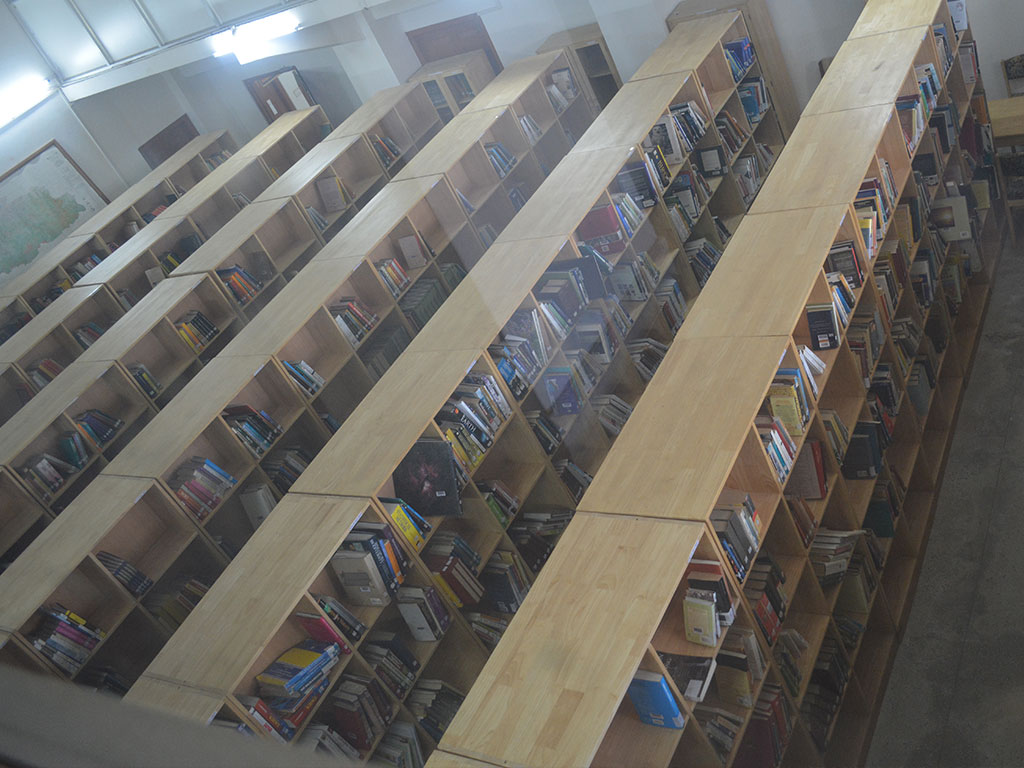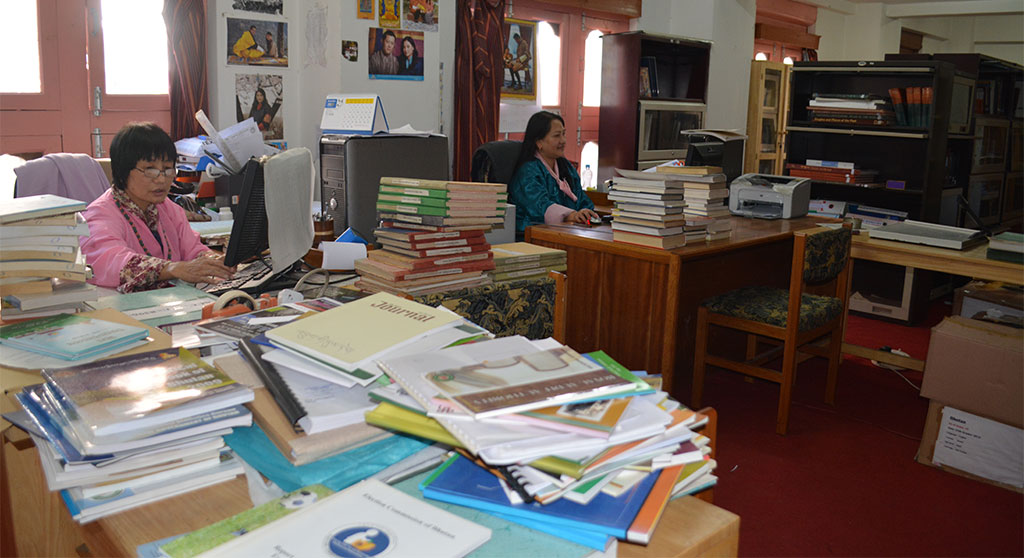Foreign Language/English Section
The National Library and Archives as the official repository, aims to collect and preserve all forms of print and non-print documents of national interest and importance, emanating from and relating to Bhutan.
Foreign Language/English Section has a modest collection of materials on diverse subjects with an emphasis on published works and manuscripts produced in Bhutan or written on Bhutan. The section has a little over 11912 titles on Bhutanese literature, history, religion, culture and traditions written in English language.

Collection Development:
On an average, around 500 numbers of books/documents are added to Foreign Language Section every year. (around 200 via purchase, 100 via the Legal Deposit Act, and the rest through donations). The development of collections at NLAB is an ongoing process. This is achieved through purchase, gift and exchange. As a result the Foreign Books Collection of the National Library has developed well over the years. At present the collection has documents predominantly on Buddhism and the history and cultures of the Himalayan regions and South Asia in general. Documents on different schools of Buddhism including Buddhist iconography and Buddhist philosophy are well represented. However, there is greater need to expand the scope of the collections.

Serial Titles / Journals and Newspapers:
NLAB receives journals, newspapers and serial titles under the Legal Deposit Act. It also receives international newspapers and journals as donations. After their use by readers they are sent to the Binding Section where they are bound and maintained. The number of journals received is 20. At present the National Library maintains bound volumes of journals and newspapers from 1950 onwards. About 1500 titles are available in bound form
National Bibliographic Agency:
NLAB as the official repository of all documents to be collected/deposited under the Legal Deposit Act of 1999, aspires to render bibliographic services and serve as the National Bibliographic Agency. The NLAB also aspires to carry out the publishing of the national bibliography and retrospective Bhutanese national bibliography. It also plans to coordinate with other resource centres of the world for transmission of data.
Accessing the NLAB Collection:
The catalogue is the key to the library collection. It records what materials the library has and where they are located. As of now our catalogue is in two sequences: author catalogue, arranged alphabetically by the surnames of the authors and shelf list catalogue, arranged in classified order by the call number given to each book.
Users can find if the library has a particular work by particular author by consulting the author catalogue.
When neither the author nor title is known, users can try by looking in general subject classification scheme (Dewey Decimal Classification Scheme) by the shelf-list catalogue. KOHA is used to manage the NLAB collections.

Stock Arrangement:
All the booksin the library are shelved in call number order using the Dewey decimal classification system. Like other library classification systems, DDC divides all knowledge into ten main classes as follows:
000 Generalities
100 Philosophy & Psychology
300 Religion
400 Social Sciences
500 Language & Linguistics
600 Pure Science
700 Technology (Applied Sciences)
700 The Arts
800 Literature & Rhetoric
900 Geography & Travel, Biography
DDC breaks down topics from broadest applications of each topic to its component parts, and its narrowest applications. The notation generally becomes longer as the topic becomes more specific. An example illustrating the hierarchical structure is shown below:
200 Religion
230 – 280 Christianity
290 Other Religion
294 Religions of Indic Origin
294.3 Buddhism
- Doctrines and Practices of Buddhism
The library racks and shelves are properly marked showing different subject areas in DDC order. For instance in the above example if a user wants to find out books on Buddhism, users should first locate the broad classification number for science at 200 and then within this broad discipline look at 294 which stands for Religions on Indic Origin. Further down within 294 the user will locate the materials on Buddhism at 294.3.
Books by different authors on the same subject e.g Buddhism are shelved together in one place and are sub-arranged alphabetically by the surname of the author.
Books are arranged on the shelves in ascending order from left to right in DDC order .In the above example books on Christianity will be shelved in ascending order from 230 to 280, and books on Buddhism will be shelved at 294.3 and so forth.
